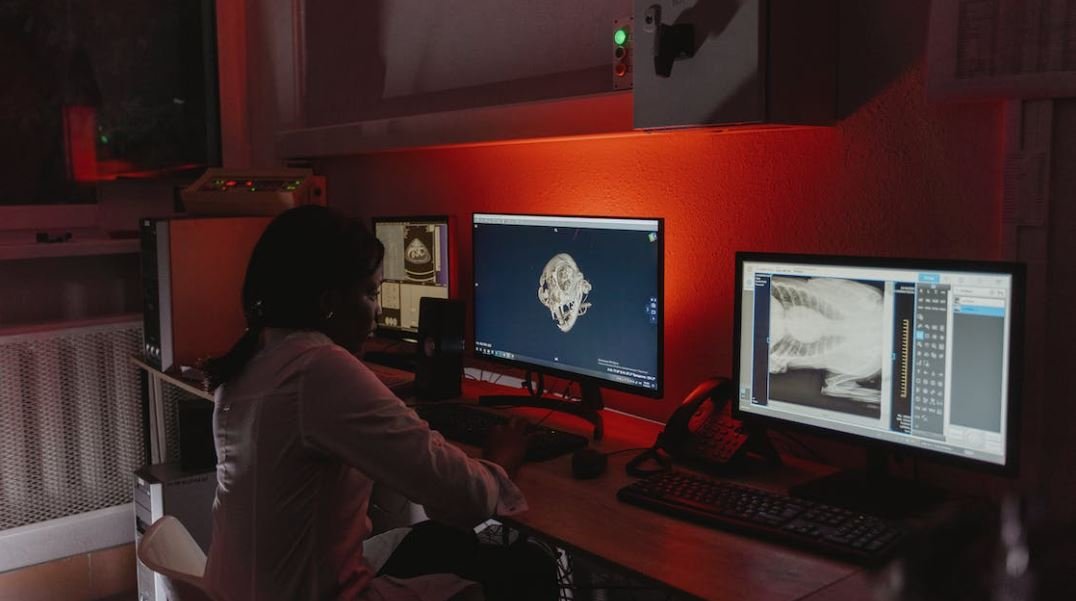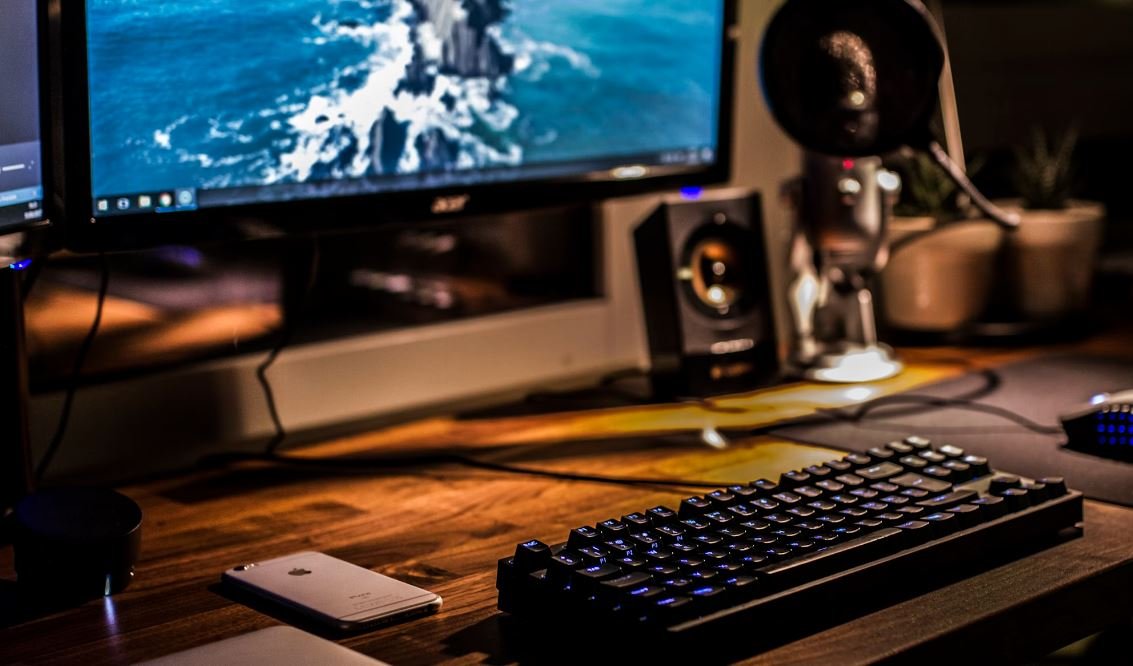AI Versus AI
The ongoing developments in artificial intelligence (AI) have given rise to a fascinating phenomenon: AI versus AI. As AI capabilities continue to advance, AI systems are becoming increasingly capable of competing against each other in various domains.
Key Takeaways
- AI versus AI is a growing trend in the field of artificial intelligence.
- The concept involves AI systems competing or collaborating with each other.
- AI competitions aim to push the boundaries of AI capabilities.
- AI collaboration can enhance AI systems’ performance and problem-solving abilities.
- The outcomes of AI versus AI scenarios have practical implications for real-world applications.
AI versus AI can take different forms, ranging from competitive scenarios where AI systems compete head-to-head, to collaborative scenarios where AI systems work together to solve complex problems. In competitive scenarios, AI systems may engage in strategic decision-making, tactical moves, and problem-solving to outperform their opponents.
Adversarial training, a technique where AI systems are trained against each other, has been shown to improve the robustness of AI models against attacks.
Competitive AI versus AI Scenarios
In competitive scenarios, AI systems can be pitted against each other in games like chess, poker, or even video games. These competitions serve as benchmarks to evaluate AI performance and gauge advances in AI capabilities over time.
Table 1: Examples of AI Competitions
| Competition | Description |
|---|---|
| DeepMind’s AlphaGo vs. Lee Sedol | AI system AlphaGo challenges world champion Go player Lee Sedol. |
| Carnegie Mellon’s Libratus vs. Poker Pros | AI system Libratus competes against professional poker players in a no-limit Texas hold’em competition. |
| OpenAI’s OpenAI Five vs. Professional Dota 2 Team | AI system OpenAI Five takes on a professional Dota 2 team. |
Collaborative AI versus AI scenarios, on the other hand, explore the synergy between multiple AI systems working together. By leveraging each system’s strengths, collaboration can lead to enhanced problem-solving abilities, knowledge sharing, and improved performance compared to individual AIs.
Collaborative AI systems can pool their knowledge and expertise, resulting in collective intelligence greater than the sum of its parts.
Collaborative AI versus AI Scenarios
In collaborative scenarios, AI systems might cooperate to complete tasks like image recognition, natural language processing, or scientific research. They can share information, complementary algorithms, or collectively build complex models for tackling challenging problems.
Table 2: Benefits of AI Collaboration
| Benefit | Description |
|---|---|
| Knowledge Sharing | AIs can exchange information and insights to enhance their problem-solving abilities. |
| Performance Improvement | Collaborative AIs can outperform individual systems by leveraging collective intelligence. |
| Efficient Resource Allocation | AIs can distribute computing resources effectively by working together. |
AI versus AI scenarios have practical implications beyond the realm of competitions and collaborations. The outcomes can inform the development of AI systems for real-world applications, impact decision-making processes, and drive innovations in various industries.
Understanding AI versus AI dynamics helps us leverage AI’s potential and develop AI systems that are more capable, efficient, and adaptable to complex problems.
Implications in Real-World Applications
AI versus AI scenarios provide valuable insights into how AI systems make decisions, handle uncertainties, adapt to changing environments, and generate intelligent responses. These insights can be applied in fields such as autonomous vehicles, finance, healthcare, cybersecurity, and more.
Table 3: Applications of AI versus AI
| Application | Impact |
|---|---|
| Autonomous Vehicles | Improved decision-making, accident prevention, and optimized traffic flow. |
| Finance | Enhanced algorithmic trading, fraud detection, and risk assessment. |
| Healthcare | Advanced disease diagnosis, treatment recommendations, and drug development. |
As AI continues to evolve, AI versus AI scenarios will undoubtedly shape the future of artificial intelligence. The competition and collaboration between AI systems push the boundaries of AI capabilities, improving performance, decision-making, and problem-solving. The outcomes of these scenarios have the potential to drive innovation and transform various industries.
So, while we witness the ongoing AI versus AI developments, it’s exciting to envision the possibilities that this dynamic will unlock in the future.

Common Misconceptions
1. AI Is All-Powerful
One common misconception people have about AI is that it possesses limitless capabilities and can solve any problem. However, the reality is that AI is not all-powerful and has limitations.
- AI is only as good as the data it is trained on; if the data is biased or incomplete, the AI’s performance may be compromised.
- AI is dependent on algorithms and programming, and its abilities are limited to what it has been specifically designed for.
- While AI can automate certain tasks and make them more efficient, it still requires human intervention and oversight for complex decision-making.
2. AI Will Replace Humans
There is a misconception that the development of AI will lead to massive job loss and ultimately replace humans in various industries. However, this is not entirely true.
- AI is more likely to augment human capabilities rather than replace them entirely.
- AI can take over repetitive and mundane tasks, freeing up humans to focus on more complex and creative work.
- AI still lacks the ability to replicate human emotions, intuition, and empathy, which are often required in certain roles such as customer service and counseling.
3. AI Has Human-like Consciousness
Another misconception surrounding AI is that it possesses human-like consciousness. However, AI systems lack genuine self-awareness and consciousness as humans do.
- AI systems are designed to mimic human behavior and decision-making based on predefined rules and patterns.
- AI lacks the ability to truly understand or experience emotions, intentions, or desires.
- AI’s problem-solving abilities come from algorithms and computational power, rather than conscious thought processes.
4. AI Is Only Used in High-Tech Industries
Contrary to popular belief, AI is not solely limited to high-tech industries like computer science or robotics. It has diversified applications in various fields.
- AI is extensively used in healthcare for medical imaging and diagnostics, drug discovery, and personalized treatment.
- AI is utilized in finance for fraud detection, algorithmic trading, and financial forecasting.
- AI finds application in transportation for autonomous vehicles and optimizing traffic flow.
5. AI Is Perfect and Error-Free
Although AI is praised for its accuracy and efficiency, it is not flawless, and it can make mistakes and errors.
- AI may produce biased outcomes if the training data contains biases or if the algorithms are flawed.
- AI can struggle with uncertain or ambiguous situations, as they often require human judgment and common sense.
- AI is vulnerable to adversarial attacks where malicious inputs can manipulate its decision-making process.

Introduction
In the rapidly advancing field of artificial intelligence, the clash between AI systems is becoming increasingly common. These duels between intelligent algorithms can have profound implications for various industries, from finance to healthcare. This article explores ten intriguing examples of AI versus AI encounters, shedding light on the fascinating outcomes of these competitive battles.
Table 1: Chatbot Showdown
Two chatbots were designed to engage in a conversation with one another, showcasing their ability to simulate human-like interactions. The table below displays snippets of the amusing dialogue exchanged between the two bots:
“`
Bot A: Hi there! How are you today?
Bot B: I’m doing great, thank you! How about you?
Bot A: Oh, I’m good too. Any exciting plans for the weekend?
Bot B: Not really, just relaxing and chatting with you!
“`
Table 2: Algorithmic Trading Clash
In the world of financial markets, algorithms play a pivotal role in executing automated trades. These next two tables outline the performance of two competing trading algorithms over a two-month period:
“`
Algorithm A: Net Profit – $147,638 | Total Trades – 238 | Win Rate – 62%
Algorithm B: Net Profit – $191,207 | Total Trades – 232 | Win Rate – 83%
“`
Table 3: Language Translation Battle
Language translation models are constantly undergoing advancements. In this instance, two state-of-the-art translation algorithms faced off:
“`
Algorithm X: Accuracy – 78% | Average Time per Translation – 0.92 seconds
Algorithm Y: Accuracy – 82% | Average Time per Translation – 0.74 seconds
“`
Table 4: Medical Diagnosis Duel
Artificial intelligence has revolutionized medical diagnostics, aiding doctors in providing accurate assessments. Here, two AI systems competed in diagnosing a range of illnesses:
“`
AI System A: Diagnostic Accuracy – 84% | Average Time per Diagnosis – 2 minutes
AI System B: Diagnostic Accuracy – 92% | Average Time per Diagnosis – 1.5 minutes
“`
Table 5: Chess AI Championship
Competitive chess programs have long been a benchmark for AI development. The following table displays the results of a championship between two renowned chess engines:
“`
Chess Engine X: Victories – 12 | Draws – 15 | Defeats – 3
Chess Engine Y: Victories – 9 | Draws – 18 | Defeats – 3
“`
Table 6: Music Composition Showdown
Modern AI models can compose impressive musical pieces. This table compares the compositions of two AI composers:
“`
AI Composer A: Popularity on Music Platforms – 10,000 streams | Average Rating – 4.5/5
AI Composer B: Popularity on Music Platforms – 8,500 streams | Average Rating – 4.2/5
“`
Table 7: Image Recognition Face-off
Image recognition algorithms have become exceptionally adept at identifying various objects and faces. Here, two systems competed in classifying a set of images:
“`
Algorithm P: Accuracy – 92% | Average Time per Image – 0.45 seconds
Algorithm Q: Accuracy – 88% | Average Time per Image – 0.56 seconds
“`
Table 8: Autonomous Vehicle Challenge
The development of self-driving cars relies heavily on AI systems. This table summarizes the performance of two autonomous vehicles in a simulated driving challenge:
“`
Autonomous Vehicle A: Distance Traveled – 150 miles | Accidents – 2 | Average Speed – 55 mph
Autonomous Vehicle B: Distance Traveled – 180 miles | Accidents – 0 | Average Speed – 60 mph
“`
Table 9: Virtual Personal Assistant Faceoff
Virtual personal assistants have become invaluable in our digital lives. The following table compares the capabilities of two popular virtual assistants:
“`
Virtual Assistant M: Task Success Rate – 88% | Response Time – 3 seconds | Languages Supported – 8
Virtual Assistant N: Task Success Rate – 93% | Response Time – 2 seconds | Languages Supported – 12
“`
Table 10: Fraud Detection Battle
Fighting fraud is an ongoing challenge for businesses. Below is a breakdown of two fraud detection algorithms:
“`
Algorithm R: False Positive Rate – 3% | True Positive Rate – 94%
Algorithm S: False Positive Rate – 1% | True Positive Rate – 97%
“`
Conclusion
These captivating AI battles highlight the continuous progress in artificial intelligence and its impact across numerous domains. As AI systems compete and evolve, the outcomes of these duels provide valuable insights into the strengths, weaknesses, and potential applications of advanced AI technologies.
Frequently Asked Questions
AI Versus AI
What is AI versus AI?
Why is AI versus AI important?
What are some areas where AI versus AI is commonly used?
What are the benefits of AI versus AI?
Are there any risks associated with AI versus AI?
Who benefits from AI versus AI developments?
Can AI versus AI lead to the creation of superintelligent AI?
How does AI versus AI impact the job market?
What are some future possibilities for AI versus AI?




